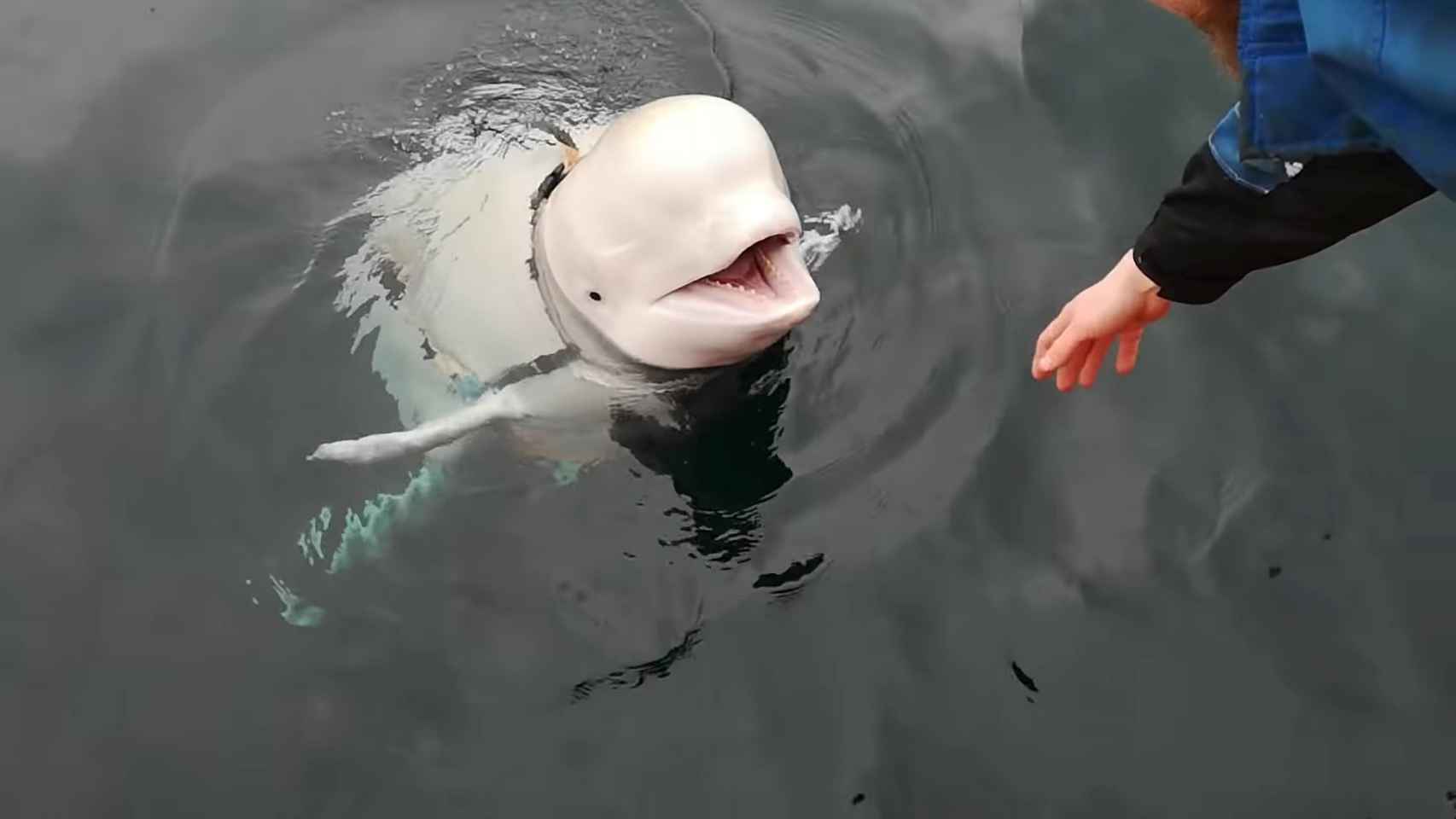in april of 2019, a group of Norwegian fishermen found an unexpected travel companion. On the island of Ingoya, a white beluga whale emerged from the water, with a camera attached, coming from a Russian military base in Murmansk. This Tuesday, the mysterious beluga has reappeared in Swedenwhich has deepened speculation that it is a Russian-trained spy.
Thus, the whale would have been wandering slowly for the last three years along the coast of Norway, a NATO nation that borders Russia. However, in recent months would have suddenly accelerated to move to Swedena country that, also in recent months, has been pressing to enter NATO in the face of the threat posed by Putin.
“We don’t know why it has sped up so much now. It could be the hormones, which drive her to find a partner. Or it could be loneliness, as belugas are a very social and could be looking for other beluga whalesSebastian Strand, a marine biologist from the OneWhale organization, told ‘The Guardian’, after the appearance of the whale this Sunday in hunnebostrandsouthwest coast of Sweden.
[Una ballena muerde a un buceador al confundirle con comida y luego lo escupe]
Strand explained that the probable age of the whale is between 13 and 14 years, a period in which “your hormones are too high“This is in contrast to the puzzling fact that the whale is not believed to have seen a single beluga since it arrived in Norway in 2019 and that”it is moving away very quickly from its natural environment“, since the closest belugas are in the Svalbard archipelago, near the north pole.
spy whale
When the group of Norwegian fishermen found the beluga on the island of Ingoya, they noticed that it was carrying a strange harness attached to his head with a Go Pro camera small, manageable and waterproof. On the plastic clasps, the harness was imprinted with the words “Team Saint Petersburg“.
Audun Rikardsen, a marine biologist, told the BBC that the harness “had been tightened firmly around his head, in front of his pectoral fins and with buckles.” Rikardsen assured that these belugas are “very intelligent” and “quite sociable”, and that they can be undergoing trainingas dogs.
also spoke with Jorgen Ree Wiig, another marine biologist who opined that the beluga may have escaped from a Russian military base in Murmansk, about 400 kilometers from where it appeared, and where Russia has the naval base of its Northern fleet. He added that these animals could be used for surveillance tasks or search.
Based on these suspicions, the russian colonel -now in reserve- Viktor Baranets claimed that, if they were using the animal for espionage work they would not attach a mobile phone number with the message ‘call this number'”.
WATCH: A beluga whale may have escaped from a Russian military facility, Norwegian officials say, after finding the mammal swimming in Arctic Norway with an “Equipment St. Petersburg” harness. Russian military is believed to have trained sea mammals, according to Norwegian media. pic.twitter.com/9CIkH5hfqy
—CBS Evening News (@CBSEveningNews) April 29, 2019
What he did acknowledge is that Russia trains dolphins in Sevastopol (Crimea) for tasks such as attack divers, adhere mines foreign ships, or analyze the seabed to protect an area of it.
the sea of BarentsFurthermore, it is a strategic geopolitical area where the movements of Western and Russian submarines are monitored. It is also the gateway to the Northern sea routewhich shortens sea voyages between the Atlantic and Pacific oceans.
On the other hand, beluga whales, which can reach a size of more than six meters and live between 40 and 60 yearsgenerally inhabit the icy waters around Greenland, northern Norway, and Russia.












